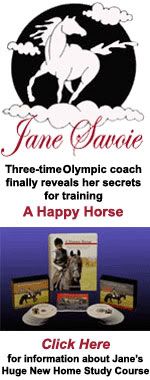
E: Environment, Enrichment,
Education, & Endangered Species
All content © by Diana L. Guerrero unless otherwise noted and may not be reprinted without prior written permission. All rights reserved. Click here for reprint permissions and fees.
Enrichment in Domestic Canids
©1997 by Arnold Chamove
Welcome to E! This section is dedicated to the environment, enrichment, and education about animals and related topics. You'll find a variety of information here. This four part series discusses canine enrichment.
Editor's note: The following article is the view of an enrichment expert out of New Zealand. Terms and strategies of enrichment for domestic animals have long been overlooked. Many of the terms and strategies used in this article are different from those used by professionals in the United States. New Zealand has long been a leader in innovative strategies. In the past, concern regarding the dietary recommendations made within this series has been expressed. This article is meant to stimulate thought but check with your nutrition specialist before changing any dietary changes or strategies.
Enrichment in Domestic Canids
(Part Two of Four)
Copyright ©1997 by Arnold Chamove
Due to the length of Enrichment in Domestic Canids it has been broken
into four parts for ease of reading. Part One: Canine nutritional oriented
strategies of feeding and food variety; Part Two: Sensory and predatory
behavior in canine destruction and hunting; Part Three: Oral and tactile
behavior of canine licking and petting; Part Four: Integration of a new
canine from day one.
DESTRUCTION
Young pups when they are growing are very interested in chewing
things. The presumed reason for this is the development of their
teeth, keeping their teeth clean, having experience in processing
various types of meat, bone, and playing with prey-like items which
bones might be likened to. Of course, one of the bad side-effects
from this is that dogs also chew other things. You can imagine a
dog, a little pup, around its burrow with its mates, and it would
chew on anything in the vicinity. This might be a bit of wood, or
a bit of bone, or a bit of skin left over from a dead animal, or
in your house that might be a nice wooden sculpture of a bird, a
bit of material that was made into a rug, or a covering of a sofa.
It's very difficult to teach young puppies that certain things are
permissible for them to chew and certain things are not.
Also you are giving him quite a variety of textures that he can chew up. Soft wood seems quite a desirable thing, although they do chew it up and then produce a mess and we have to clean up. We can decide whether we want to give dogs something that they would really like to chew, something soft and that can get in between their teeth and, perhaps, give them the type of oral stimulation that they like such as wood or material that they can shred, or leather material. Or we can decide that "no, that's too much mess;" we'll give them the types of things which we want them to chew, which perhaps they're not so interested in. We know, or can discover, which the animal would prefer and we know what wild animals experience. We have to decide whether we are going to give them these things.
HUNTING
Dogs are also hunting animals, they appear to like to look around
and sniff around an area, searching out interesting smells and the
like. They seem to quite enjoy hunting around the house or garden
or larger area for items of food. Although they don't spend a lot
time (they may spend not as much time as they would hunting) but
they will spend a good 15 minutes looking for food if you hide it
around the house. You need to kind-of train dogs that this is a
game and once they learn that food is hidden, they'll search it
out. Dogs seem normally to search in those areas where they have
found food in the past, but if you take small dog biscuits, these
can be very small biscuits, even the very small cat biscuits, and
place one or two of them in a location which the dog can reach without
scratching your furniture, they'll spend a number of minutes searching
around the house for these interesting foods. If you are going out
into the garden and you feed your animals scraps you can do the
same thing with bits of meat from the table, or whatever, and the
dogs will search high and low for these hidden morsels - into the
fork of trees, on the branches of shrubs, even under pieces of wood.
Continue to Part Three of Canine Enrichment.
About the Author: Dr. Chamove has practical experience with laboratory animals as Director of Research. He has taught various courses related to Animal Behaviour, Clinical Techniques, and Research Methods. In addition, Arnold Chamove has done collaborative research with H.F.Harlow on primate learning and social development, taught at Stirling University in Scotland and is currently at Massey University in New Zealand. He is the recipient of the Anderson Prize from the Laboratory Animal Science Association for his work on enrichment. Special Thanks to S.J. McComb who made a contribution to both the ideas and the execution of this article. Contact the author by Email: A.S.Chamove@massey.ac.nz




